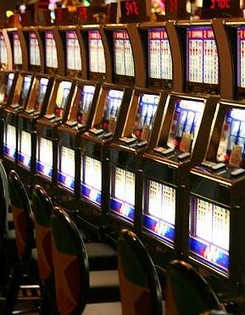 Montana has more gambling sites than any other state with the exception of Nevada, and perhaps South Carolina. There are well over 1,700 age-restricted locations offering over 19,000 machine games of poker, keno, and slot simulations. The “casinos”, which have twenty machines each, may also allow poker-like games on premises. Additionally the operators may sell raffle and pull-tab tickets. Montana is also one of four states that is permitted to have sports betting. Taverns are allowed to let players participate in pools on events such as football games and World Series games.
Montana has more gambling sites than any other state with the exception of Nevada, and perhaps South Carolina. There are well over 1,700 age-restricted locations offering over 19,000 machine games of poker, keno, and slot simulations. The “casinos”, which have twenty machines each, may also allow poker-like games on premises. Additionally the operators may sell raffle and pull-tab tickets. Montana is also one of four states that is permitted to have sports betting. Taverns are allowed to let players participate in pools on events such as football games and World Series games.
The state permits wagering on quarter horse races and participates in the sale of tickets for Lotto America. The bulk of the Montana gaming is at the “casino” sites, 93 percent of which are places that sell alcoholic beverages.
Gambling operations came to Montana more as a result of legal decisions than of deliberately studied policy. The voters legalized gambling in 1972, and two years later the legislature authorized sports pools, bingo games, raffles, and live card games. In 1976 the state supreme court ruled that video keno games were “live” keno games. Tavern owners across the state began installing not only video keno games but also other machines for gambling. In 1984 the Montana Supreme Court said these did not satisfy the “live games” designation. Therefore, the legislature was called into action by the tavern owners. First they approved the placement of five machines in a tavern. Subsequently, the number of machines was changed, and it now rests at twenty per liquor license. As some taverns hold multiple licenses, they actually operate forty or sixty machines.
The “casinos” pay a state tax of 15 percent on their machine winnings, as well as a fee of $250 to $500 for (really) live tables. The state receives approximately $20 million in gaming taxes each year.
Four Native American tribes also operate machine and poker gambling casinos in the towns of Box Elder, Crow Agency, Lame Deer, and Wolf Point.
|
|